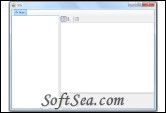|
SharePoint Web Part Manager 
|
WinForm SharePoint Web Part Manager. SharePoint Web Part Manager is a WinForm tool using the SharePoint object model that enables developers and power users to add, update, delete, import and export (export feature too) web parts to/from SharePoint publishing and web part pages. SP 2010 version available too.
The tool consists of six files: SPx.exe, SPx.Core.dll, SPx.SharePoint.dll, SPx.SharePoint.WPEditor.dll, spxcore.xml and spxwpeditor.xml - you need to copy these to the machine you want to use it on and start the SPx.exe executable. The target machine should have .NET 3.5 installed and should be a part of SharePoint 2007 farm (the tool uses the SharePoint object model).
Commands overview
For the web part level:
1. Save web part - saves the selected web part after you have changed its properties in the PropertyGrid control.
2. Export web part - exports a .webpart or .dwp file with the web part data to the file system.
3. Delete web part - deletes the web part from the page.
4. Close web part - closes the web part.
5. Open web part - opens a previously closed web part (available only for closed web parts).
6. Move web part - allows you to change the web part zone and zone order of the web part.
For the file level:
1. Check out - checks out the selected file (available only for files in libraries and if the file is not already checked out)
2. Check in minor - checks in minor the selected file (available only for files in libraries and if the file is checked out)
3. Check in major - checks in major the selected file (available only for files in libraries and if the file is checked out)
4. Check in overwrite- checks in with overwrite the selected file (available only for files in libraries and if the file is checked out)
5. Discard check out - discards the check-out of the selected file (available only for files in libraries and if the file is checked out)
6. Publish - publishes the selected file (available only for files in libraries and if the file was previously checked in to a draft state)
7. Export all web parts - exports all web parts in the selected file to a specified folder (saving the web parts as .webpart and .dwp files)
8. Import web part(s) - imports web parts from .webpart and .dwp files from a selected folder in the file system (you can specify one or several files). You need to also specify the target web part zone ID on the page and optionally the zone index for the first web part to be imported (the consecutive parts will be assigned incrementing indices)
9. Add web part(s) - adds web parts from a list of available web parts for the current site - the list consists of all non-system SharePoint lists (resulting in adding a ListView web part) in the site and all web parts available in the web part gallery of the site. You need to also specify the target web part zone ID on the page and optionally the zone index for the first web part to be added.
10. Delete web part(s) - deletes web parts from the page - you can select to delete all web parts on the page or just select one or several of them to be deleted.
11. Export module feature - exports a module feature with the current file to a specified folder. It exports a feature.xml and an elements.xml file together with the file of the page. The elements file contains a Module element with a single File element containing the web part definitions of all web parts on the page. There is an option to export only the elements file instead of the full feature which is handy when you want to quickly copy all web parts of one page to another one using the "Import web parts from module file" command. For publishing pages the File element is exported with all relevant Property elements.
12. Import web parts from module file - imports web parts from an elements file (containing a Module element with one or many File elements) of an existing module feature or one created with the "Export module feature" command. The command shows a dialog which allows you to select the elements file to be imported and after the file is chosen a drop down list gets populated with the available File elements in the Module elements file so that you can choose which File definition to be imported. The command automatically resolves any resource tokens and ~Site/~SiteCollection tokens if present in the Module file.
For the folder level:
* Export module feature - analogous to the command with the same name on the file level with the difference that you can choose whether to export all files in the current folder or just a group of selected files. The same command is available on the site level too - in this case it exports all/selected files from the root folder of the site.
For ListViewWebPart-s (XsltListViewWebPart-s in the SP 2010 version) the associated SPView instance is displayed as a child node of the web part:
* Update View - command is available at that level - it saves the changes made to the SPView object
The SharePoint 2010 version works by default with XsltListViewWebPart web parts instead of the older ListViewWebPart. It also has the extra option to select to export the web part ID-s when exporting a module feature.
Requirements:
* SharePoint Server 2007 pr 2010
The license of this software is Free, you can free download and free use this server utility software.
